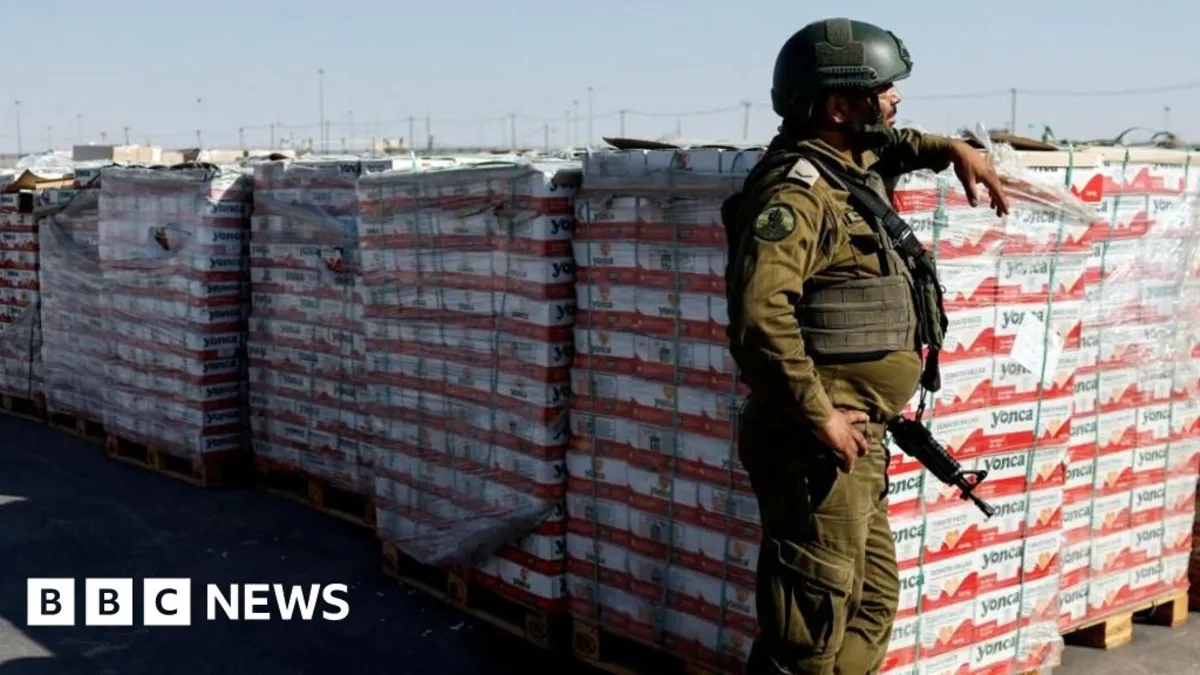
The focus on air drops into Gaza has been labeled a grotesque distraction by leaders of various aid agencies, who emphasize that such measures will not effectively reverse the territory's escalating starvation crisis. Early on Sunday, Israel's military announced that it had conducted airdrops of humanitarian aid into the Gaza Strip while also proclaiming the establishment of humanitarian corridors for UN aid convoys. In addition to this, the United Arab Emirates (UAE) and Jordan are anticipated to begin their own air drops in the upcoming days. UK Prime Minister Keir Starmer has stated that the British government is committed to facilitating aid to Gaza via these air drops.
Ciarán Donnelly, a representative from the International Rescue Committee, highlighted that while aid drops may provide some assistance, they can never deliver the necessary volume or quality of aid required by the people of Gaza. More than 100 international aid organizations and human rights groups have raised alarms about mass starvation within the Strip. The Hamas-run Gaza health ministry reported an additional five deaths due to malnutrition on Saturday, bringing the total to 127 since the onset of the ongoing war, which includes 85 children.
The World Food Programme has issued stark warnings, indicating that one in three Gazans are going days without food, and around 90,000 women and children urgently need medical treatment in what has been described as a man-made mass starvation situation. The current conversation surrounding air drops has arisen primarily due to the failure of aid to enter Gaza through traditional land routes.
Philippe Lazzarini, the head of the UN's Palestinian refugee agency, UNRWA, criticized air drops as being expensive, inefficient, and potentially harmful. He noted that if aid drops go awry, they could inadvertently cause harm to starving civilians. Lazzarini stated that UNRWA has the equivalent of 6,000 trucks stationed in Jordan and Egypt, awaiting permission to enter Gaza. He emphasized that political will is essential to lift the blockade, open borders, and ensure safe and dignified access for those in need. He remarked, “Driving aid through is much easier, more effective, faster, cheaper, and safer. It’s more dignified for the people of Gaza.”
His statements were made prior to Israel's announcement regarding designated humanitarian corridors aimed at ensuring the safe passage of UN convoys delivering food and medical supplies. However, Israel did not specify the locations or operational details of these corridors. The Israeli government maintains that there are no restrictions on aid entering Gaza, suggesting that the UN is colluding with Hamas to disrupt the distribution of aid. This claim has been flatly denied by the UN, which insists that Israel is creating bureaucratic obstacles that hinder aid collection within Gaza. Hamas has also denied allegations of stealing aid from collection points, and a recent report from USAID found no evidence of systematic looting.
This is not the first instance where Western and Arab governments have attempted to deliver aid to Gaza via air. Last year, Britain's Royal Air Force facilitated the delivery of 110 tonnes of aid through 10 air drops as part of a Jordanian-led international coalition. Despite these efforts, aid agencies argue that such quantities are insufficient to mitigate the risks of mass starvation currently facing Gaza. Analysis conducted by the BBC found that approximately 160 planes would be necessary to provide a single meal for each of Gaza's two million residents. According to US Central Command figures from last year, C-130 cargo planes delivered around 12,650 meals per flight, highlighting the scale of the challenge.
Several aid organizations have raised concerns regarding the dangers of dropping large quantities of food onto densely populated areas in Gaza. Shaina Low of the Norwegian Refugee Council reported that individuals have drowned while attempting to collect aid that has blown into the Mediterranean Sea, and there have been instances where falling boxes have injured people. Even successful drops result in chaos, with individuals fighting over the limited aid available. Many Gazans have expressed fears about the risks associated with these airdrops. One resident in the northern Strip told BBC Arabic that the process is inherently unsafe and has led to numerous tragedies, stating that when aid is dropped, it risks landing directly on tents, potentially causing severe injuries or fatalities.
As the humanitarian crisis deepens, Palestinians are grappling with both dehydration and starvation. One mother shared her plight with the BBC, lamenting the lack of food and water, saying, “We’re craving even water.”
The current conflict in Gaza was ignited by a Hamas-led attack on southern Israel on October 7, 2023, resulting in approximately 1,200 deaths and 251 individuals taken hostage. Since then, more than 59,000 people have reportedly died in Gaza, according to the health ministry run by Hamas. Israel enforced a total blockade of aid deliveries in early March and resumed military operations against Hamas two weeks later, thereby collapsing a two-month ceasefire. The blockade was partially eased after nearly two months, as global experts warned of a looming famine, yet shortages of food, medicine, and fuel have escalated. Most of Gaza's population has faced multiple displacements, and over 90% of homes are believed to be damaged or destroyed.